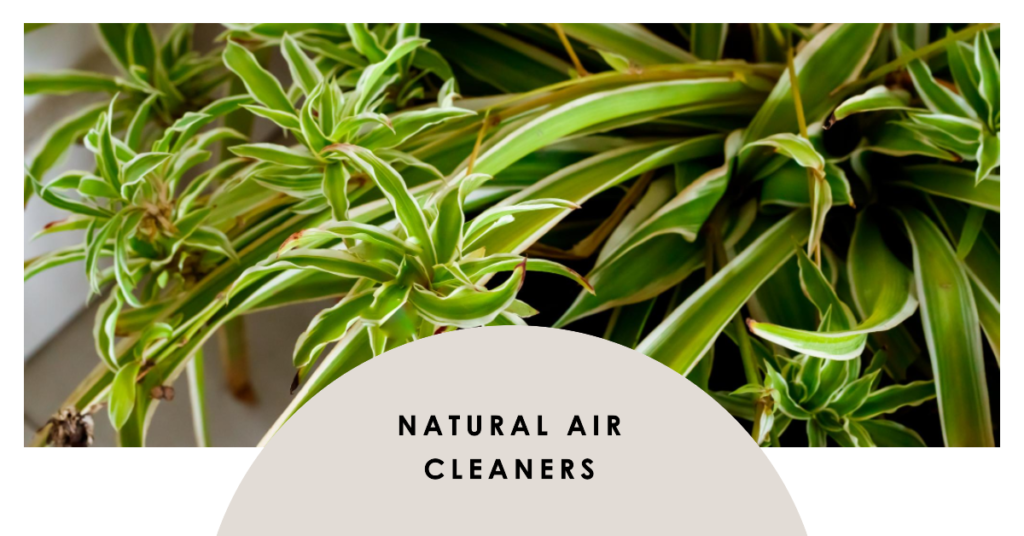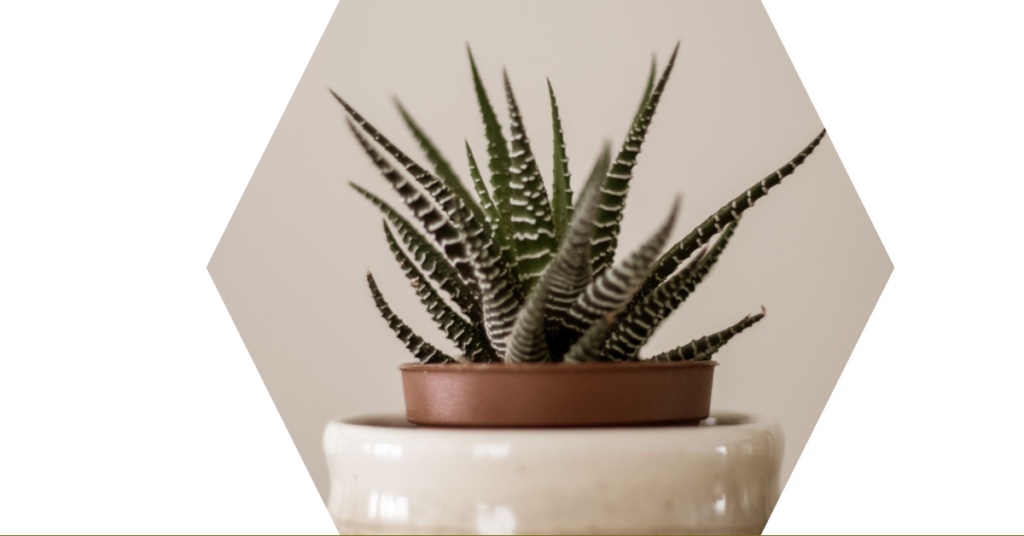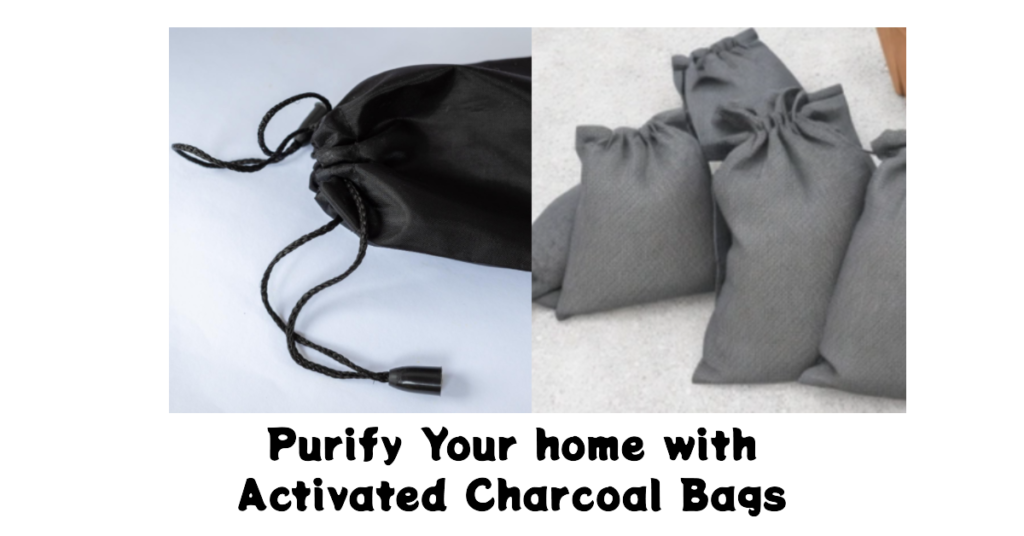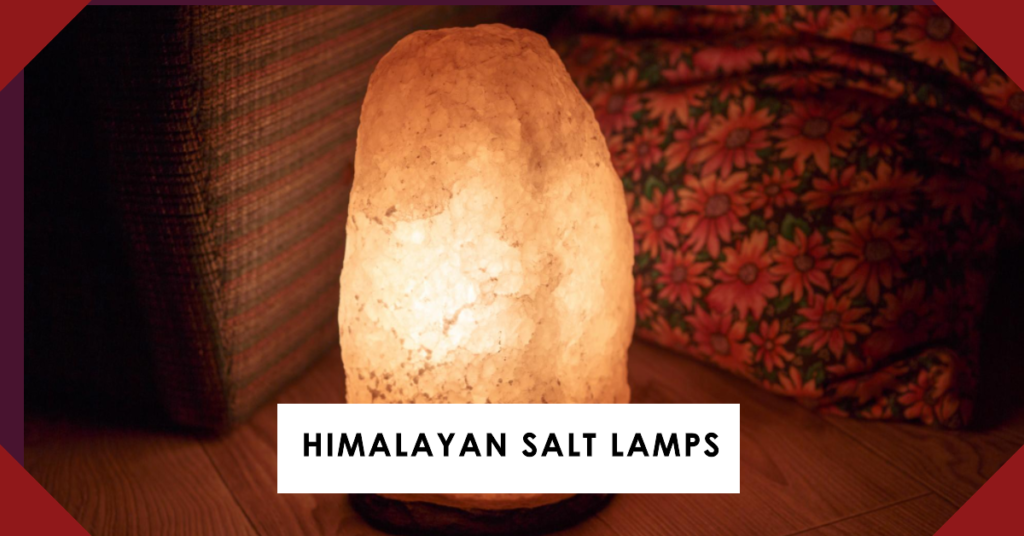Natural air cleaners, also known as Natural air purifiers, have the potential to remove airborne impurities and enhance indoor air quality, making our homes more pleasant and healthy places to live.
Indoor air quality is a topic that often lingers unnoticed in our daily lives, yet it plays a pivotal role in our well-being. The air we breathe at home affects our health, comfort, and overall quality of life. Not everyone affords buy Air Purifiers to clean air, so there’s an increasing need for natural air cleaners. Many studies have shown the benefits of natural air cleaners. These natural solutions harness the power of nature to purify the air we breathe, ensuring that our homes are not just shelters but sanctuaries of clean and fresh air.
In this article on Natural Air Cleaners will delve into the world of natural air cleaners, exploring their types, benefits, maintenance, and more. Whether you’re a health-conscious individual or someone looking to create a clean and serene living environment, understanding natural air cleaners is a breath of fresh air in the quest for well-being and sustainability.
Introduction
In this article, we’ll kick things off by understanding what natural air cleaners are and the pivotal role they play in improving air quality.

What are Natural Air Cleaners
Natural air cleaners, also known as air revitalizers, are ingenious solutions designed to remove impurities from the air we breathe. They utilize the cleansing prowess of elements found in nature, such as plants, charcoal, and salt, to filter out pollutants, dust, and odors, leaving you with air that feels as fresh as a morning breeze in a forest.
These devices work by employing natural elements like plants or minerals to capture and neutralize pollutants in the air. By doing so, they improve indoor air quality and offer a range of health benefits.
Importance of Air Quality and the Role of Natural Solutions
Good air quality is not merely a luxury; it’s a necessity for healthy living. Poor air quality can lead to a range of health issues, from allergies and respiratory problems to reduced concentration and overall discomfort. It’s here that natural air cleaners step in as eco-friendly heroes, offering an organic and sustainable approach to purifying indoor air.
Natural air cleaners are essential in combating the effects of air pollution, which is a growing concern in today’s world. Whether it’s the smoke from cooking, dust mites, pet dander, or chemical pollutants, these solutions harness the power of nature’s elements to create a safe haven within your home or office.
Moreover, by opting for natural air cleaners, you not only contribute to a healthier living environment but also promote sustainability. These devices are energy-efficient and have a lower environmental impact compared to their electronic counterparts.
Types of Natural Air Cleaners
Now that we’ve grasped the significance of natural air cleaners, let’s explore the fascinating variety of options available. Each type has its unique strengths, and you can choose the one that best suits your needs and preferences. Whether you prefer the calming presence of houseplants or the subtle charm of Himalayan salt lamps, there are natural air cleaners for everyone.
1) Houseplants as Natural Air Purifiers
Houseplants have long been admired for their aesthetic appeal, but their contributions extend far beyond decorating your living spaces. In this section, we’ll discover the world of common air-purifying plants and how they actively enhance the quality of your indoor air.

| Plant | Air-Purifying Abilities |
|---|---|
| Snake Plant (Sansevieria) | Removes formaldehyde and benzene. |
| Peace Lily (Spathiphyllum) | Filters out ammonia, benzene, and formaldehyde. |
| Spider Plant (Chlorophytum) | Effective against pollutants like xylene and toluene. |
| Boston Fern (Nephrolepis) | Acts on pollutants like formaldehyde and xylene. |
| Aloe Vera (Aloe barbadensis) | Cleanses the air of formaldehyde and benzene. |
A. Common Air Purifying Plants and Their Characteristics
Houseplants like the Snake Plant, Peace Lily and Spider Plant aren’t just visually pleasing; they are natural air-purifying champions. These green companions absorb common household pollutants like formaldehyde, benzene, and trichloroethylene. You’ll learn to recognize them and discover their unique characteristics that make them exceptional air purifiers.
For instance, the Snake Plant, is an excellent choice for beginners. It’s a hardy plant that doesn’t require much maintenance and effectively removes toxins like formaldehyde and benzene from the air.
The Peace Lily, is highly effective at removing ammonia, benzene, and formaldehyde. Just a single Peace Lily can significantly improve the air quality in your home.
Spider Plants are characterized by their long, arching leaves with white stripes. They are excellent at removing pollutants like xylene and toluene. Additionally, they are safe for homes with pets.
B. How Plants Remove Pollutants and Toxins from the Air
Houseplants don’t just sit there looking pretty; they actively work to cleanse your indoor air. We’ll unravel the science behind this process and understand how these plants remove pollutants and toxins from the air. From photosynthesis to absorption, you’ll gain insight into the fantastic work these green allies do.
Plants utilize a process called phytoremediation to remove impurities from the air. Through tiny openings in their leaves, known as stomata, they absorb harmful gases and chemicals. Once absorbed, these pollutants are transported to the plant’s roots, where they are broken down or stored.
One remarkable aspect of this natural purification process is that it doesn’t just filter out pollutants; it also releases oxygen during photosynthesis, making your living space fresher and more conducive to healthy living.
C. Maintenance and Care for Air Purifying Houseplants
As with any living thing, houseplants need care and attention to thrive. In this section, we’ll provide you with valuable tips on how to maintain and care for your air-purifying houseplants. You’ll learn about the right amount of sunlight, watering frequency, and other essential considerations to ensure that your plants continue to keep your indoor air fresh and clean.

2) Activated Charcoal for Air Purification
Activated charcoal has been a trusted substance for purification for centuries. In this section, we’ll delve into how activated charcoal works its magic on indoor air quality, exploring the types of products available and essential considerations for its use as an air cleaner.
A. How Activated Charcoal Works to Purify the Air
Activated charcoal is like a magnet for impurities in the air. It absorbs and traps various harmful substances, such as chemicals, odors, and allergens. We’ll demystify the science behind this process and explain how activated charcoal enhances the air you breathe.
Activated charcoal is a form of carbon that has been processed to have small, low-volume pores that increase the surface area available for adsorption. Adsorption is the process by which molecules adhere to the surface of a solid or liquid, and activated charcoal is exceptionally good at it.
When air comes into contact with activated charcoal, gases and particles in the air become trapped within the porous structure of the charcoal. This effectively removes impurities from the air, leaving it cleaner and healthier to breathe. The larger the surface area of the charcoal, the more effectively it can purify the air.
B. Types of Activated Charcoal Products for Air Cleaning
Activated charcoal is available in various forms for air cleaning. The most common ones include:
- Activated Charcoal Bags: These are porous bags filled with activated charcoal granules. They are excellent for small spaces like closets, bathrooms, or cars.
- Activated Charcoal Filters: These filters are designed to be used with air purifiers. They can capture a wide range of pollutants, including allergens and odors.
- Activated Charcoal Sachets: These small sachets can be placed in shoes, refrigerators, or other areas to absorb odors and moisture.
The choice of the product depends on your specific air purification needs and the size of the space you want to purify. Activated charcoal can effectively neutralize odors from pets, cooking, and other sources, making it a versatile and natural air-cleaning option.
C. Considerations When Using Activated Charcoal as an Air Cleaner
While activated charcoal is highly effective, there are considerations to keep in mind. We’ll provide valuable insights into the proper usage of activated charcoal for air purification and offer tips for maintaining its effectiveness.

3) Bamboo Charcoal as Natural Air Cleaners
Bamboo charcoal, derived from bamboo plants, is another natural air purification solution that’s gaining popularity. In this section, we’ll explore what bamboo charcoal is, how it effectively cleanses the air, and why it’s a sustainable choice for eco-conscious individuals.
A. What is Bamboo Charcoal and How Does It Work?
Bamboo charcoal, often referred to as activated bamboo charcoal, is made from pieces of bamboo that are burned at high temperatures. The result is a porous and incredibly absorptive material that excels at removing impurities from the air.
One of the key reasons bamboo charcoal is highly effective is its vast surface area filled with tiny holes. These holes, often referred to as pores, provide ample space for the charcoal to adsorb a wide range of airborne particles, including allergens, odors, and excess moisture.
Bamboo charcoal is a natural dehumidifier. It helps maintain the right level of humidity indoors, which is vital for preventing mold growth and allergen proliferation. The absorption of excess moisture also contributes to the prevention of odors and bacterial growth.
B. Health Claims and Potential Benefits of Bamboo Charcoal
Bamboo charcoal is celebrated for its health benefits and potential to create a cleaner, healthier living environment. Some of the key advantages include:
- Odor Removal: Bamboo charcoal effectively absorbs and neutralizes odors from pets, cooking, and other sources, making your home more pleasant to live in.
- Allergen Reduction: By removing airborne allergens, bamboo charcoal can help reduce allergies and respiratory issues.
- Mold Prevention: Its dehumidifying properties help keep indoor spaces dry, reducing the risk of mold and mildew growth.
- Energy Efficiency: Bamboo charcoal products don’t require any power source, making them an energy-efficient air purification option.
When used in spaces like closets, bathrooms, or kitchens, bamboo charcoal can be a discreet yet powerful addition to your air cleaning arsenal.
C. Using and Maintaining Bamboo Charcoal for Air Purification
Using bamboo charcoal for air purification is simple and straightforward. We’ll guide you through the process and offer maintenance tips to ensure that your bamboo charcoal products continue to perform at their best.
Here’s how to use bamboo charcoal for air purification:
- Choose the Right Product: Bamboo charcoal is available in various forms, including bags, sachets, and even as a natural charcoal filter for air purifiers. Select the product that suits your needs and the size of the space you want to purify.
- Place Strategically: Position the bamboo charcoal product in the area you wish to purify. For example, if you’re targeting odors in your refrigerator, place a sachet inside. If you want to reduce humidity and allergens in a closet, use a bamboo charcoal bag.
- Monitor and Recharge: Depending on the product, bamboo charcoal may require recharging to maintain its effectiveness. This is usually done by placing it in direct sunlight for a few hours, which releases the trapped impurities and refreshes the charcoal. Follow the specific instructions that come with your chosen bamboo charcoal product.
- Replace as Needed: Over time, bamboo charcoal may lose its adsorption capacity. When you notice a decline in its effectiveness, it’s time to replace it with a fresh product.
By incorporating bamboo charcoal into your indoor spaces and following these usage and maintenance guidelines, you can enjoy the many benefits it offers as a natural air cleaner.

4) Himalayan Salt Lamps as Natural Air Cleaners
Himalayan salt lamps are more than just decorative pieces; they’re known for their unique ability to cleanse the air and create a serene ambiance. In this section, we’ll unveil the magic behind Himalayan salt lamps, explore the health claims surrounding them, and understand how to use and maintain these captivating natural air cleaners.
A. What are Himalayan Salt Lamps and How Do They Work?
Himalayan salt lamps are made from chunks of pink Himalayan salt, which is known for its rich mineral content. When the salt chunks are hollowed out to accommodate a light bulb or candle, the lamp emits a warm, soothing glow.
But these lamps do more than just provide gentle lighting. When the lamp is illuminated, it generates negative ions, which are invisible molecules that can have a positive impact on your indoor air quality. Negative ions work by attracting and neutralizing airborne particles, such as dust, pollen, and pollutants, creating a fresher and more invigorating environment.
While the science behind Himalayan salt lamps’ air-cleansing properties is still debated, many users report experiencing the benefits of improved air quality and enhanced well-being when using these lamps .
B. Health Claims and Potential Benefits of Salt Lamps
Himalayan salt lamps have garnered a loyal following of users who swear by their effectiveness in creating a healthier living space. Some of the potential benefits associated with salt lamps include:
- Air Purification: Himalayan salt lamps can help reduce allergens, dust, and other pollutants, which can be especially beneficial for individuals with allergies or respiratory conditions.
- Mood Enhancement: The soft, warm glow of salt lamps is believed to have a calming and relaxing effect, promoting a sense of well-being.
- Nighttime Comfort: Many people find the gentle light of a salt lamp conducive to sleep, as it’s less disruptive to circadian rhythms than artificial blue light from screens and LEDs.
While scientific evidence supporting these claims is limited, the anecdotal evidence is compelling, and many individuals find salt lamps a valuable addition to their homes.
C. Using and Maintaining Himalayan Salt Lamps for Air Purification
Using Himalayan salt lamps is a straightforward process, and maintenance is minimal. We’ll guide you through how to get the most out of these unique air-cleansing fixtures.
Here’s how to use and maintain Himalayan salt lamps for air purification:
- Placement: Position the salt lamp in the area you want to purify and where it can be safely illuminated. It’s often recommended to use a lamp that’s appropriately sized for the space.
- Regular Use: Keep your salt lamp illuminated regularly, whether by using a light bulb or a candle. The heat generated is essential for releasing negative ions and aiding in air purification.
- Cleaning: Over time, salt lamps may accumulate dust and debris. To clean your lamp, switch it off, allow it to cool, and gently wipe it with a dry or slightly damp cloth. Avoid using chemical cleaning products.
With proper placement and regular use, Himalayan salt lamps can help improve air quality in your home, leaving you with a cleaner and more serene living environment.

5) Beeswax Candles
Beeswax candles offer more than just a warm and inviting ambiance. In this section, we’ll explore the natural air-cleansing properties of beeswax candles, the potential health benefits they offer, and how to use and maintain these delightful light sources.
A. The Air-Cleansing Properties of Beeswax Candles
Beeswax candles are known for their air-purifying abilities. When burned, they release negative ions into the air, which, as mentioned earlier with Himalayan salt lamps, work to neutralize and eliminate positively charged particles like dust, pollen, and other allergens. This process ultimately leads to cleaner and fresher indoor air.
Unlike paraffin candles, which are petroleum-based and can release harmful chemicals when burned, beeswax candles are a natural and safe alternative. They don’t produce soot, and the air they cleanse is entirely free of synthetic chemicals and pollutants.
B. Health Claims and Potential Benefits of Beeswax Candles
Users of beeswax candles often report experiencing various benefits, and while scientific evidence is limited, the anecdotal evidence is encouraging. Some potential advantages of using beeswax candles include:
- Improved Air Quality: Beeswax candles can reduce indoor air pollutants, enhancing the overall quality of the air you breathe.
- Respiratory Benefits: Individuals with allergies or respiratory conditions may find relief from symptoms when using beeswax candles, as they help remove allergens from the air.
- Mood Enhancement: The warm and gentle glow of beeswax candles can create a cozy and calming atmosphere, promoting relaxation and well-being.
Given their natural and non-toxic nature, beeswax candles are a safe and enjoyable addition to your indoor spaces.
C. Using and Maintaining Beeswax Candles for Air Purification
Using and maintaining beeswax candles is simple and enjoyable. Here’s how to make the most of these natural air cleansers:
- Selection: Choose high-quality, 100% pure beeswax candles without additives or artificial fragrances. These candles are readily available in various shapes and sizes.
- Placement: Position the beeswax candles in the area you want to purify. You can place them in a candle holder or on a heat-resistant surface. Ensure there is proper airflow around the candles to maximize their air-cleansing effects.
- Regular Use: Light the beeswax candles and allow them to burn for at least an hour at a time to release negative ions. Be sure to blow out the candles before leaving the room or going to sleep.
With proper selection, placement, and regular use, beeswax candles can be a delightful and effective way to enhance the air quality in your home.

6) Essential Oils
Essential oils are well-loved for their soothing scents, but their benefits go beyond aromatherapy. In this section, we’ll delve into how essential oils can contribute to improved air quality, explore specific oils that are effective air purifiers, and understand how to use them in your living spaces.
A. Essential Oils for Air Purification
Essential oils are derived from plants and contain the concentrated natural compounds responsible for the plant’s fragrance. Many essential oils have antibacterial, antifungal, and antiviral properties, making them valuable for purifying the air.
Some essential oils are particularly effective at cleansing the air and neutralizing odors. These oils include:
- Lavender Oil: Lavender essential oil has a delightful scent and is known for its antibacterial and antiviral properties. It can help reduce allergens and promote relaxation.
- Tea Tree Oil: Tea tree essential oil is a powerful antiseptic and antifungal agent. It’s highly effective at killing mold, bacteria, and other indoor air pollutants.
- Lemon Oil: Lemon essential oil has a fresh and uplifting scent. It has strong antiseptic properties and is known for its ability to neutralize odors.
These essential oils can be used individually or combined to create custom blends for air purification. They can be diffused using various methods, such as diffusers, oil burners, or humidifiers.
B. How Essential Oils Improve Air Quality
Essential oils work by releasing tiny particles of oil into the air, where they can interact with airborne pollutants. When essential oils are diffused, the following processes contribute to air purification:
- Airborne Bacteria and Viruses: Some essential oils have antiviral and antibacterial properties, which help neutralize harmful microorganisms in the air, reducing the risk of illnesses caused by airborne pathogens.
- Allergens: Essential oils like tea tree and eucalyptus can help reduce allergens in the air by neutralizing pet dander, dust mites, and pollen. This can provide relief for individuals with allergies and respiratory conditions.
- Odor Neutralization: Essential oils have natural deodorizing properties, making them effective at neutralizing unpleasant odors from cooking, pets, or other sources.
Each essential oil has its unique properties and benefits, allowing you to choose the one that aligns with your air purification goals and preferred fragrance.
C. Using Essential Oils for Air Purification
Using essential oils for air purification is a delightful and customizable process. Here’s how to incorporate essential oils into your indoor air cleaning routine:
- Choose Your Oils: Select essential oils based on your preferences and the specific air purification needs of your living spaces. You can use single oils or create custom blends to achieve the desired results.
- Diffusion Methods: Essential oils can be diffused using a variety of methods, including ultrasonic diffusers, oil burners, and evaporative diffusers. These devices disperse the oil particles into the air, allowing them to interact with pollutants.
- Regular Use: To maintain improved air quality, use essential oil diffusion regularly. You can diffuse essential oils as often as you like and experiment with different blends to create your desired ambiance.
Essential oils provide a pleasant and natural way to enhance the air quality in your home while infusing your spaces with delightful scents. Their versatility and customizability make them a popular choice for air purification.
7) Use Natural Air Cleaners like White Vinegar or Baking Soda
When it comes to keeping your indoor air clean and healthy, it’s not just about what’s in the air but also the surfaces and items in your home. In this section, we’ll explore natural cleaning agents like white vinegar and baking soda, which can help maintain a pollutant-free environment.
A. White Vinegar: The Natural Cleaning All-Star
White vinegar, a kitchen staple, is not only an effective cleaner but also a natural air purifier. It has antibacterial and antifungal properties and can help in the following ways:
- Neutralizing Odors: White vinegar can absorb and neutralize odors, making it a powerful tool for removing cooking, pet, and smoke odors from the air.
- Mold and Mildew Prevention: Using white vinegar to clean surfaces can deter the growth of mold and mildew, which are common indoor air pollutants.
- Allergen Reduction: By cleaning with white vinegar, you can reduce allergens such as dust mites, which can thrive in bedding and upholstery.
You can use white vinegar as a natural cleaner by diluting it with water and using it to clean various surfaces and areas in your home.
B. Baking Soda: The Multi-Purpose Air Freshener
Baking soda is a versatile and natural cleaning agent that can also help improve indoor air quality. It has several air-purifying benefits:
- Odor Absorption: Baking soda can absorb and neutralize odors in your home, making it an effective air freshener for closets, refrigerators, and other small spaces.
- Carpet Deodorizer: Sprinkling baking soda on your carpets before vacuuming can help eliminate odors and reduce allergens trapped in the carpet fibers.
Using baking soda as an air freshener is simple. You can place an open box of baking soda in your refrigerator or closets, or create your own natural air freshener by adding a few drops of essential oils to baking soda and placing it in a decorative container.
Quick Tips for Naturally Purify Your Home Air
Creating a healthy and clean living environment involves more than just natural air cleaners. In this section, we’ll provide you with a list of quick tips to further improve your indoor air quality and well-being.
a. Well-Ventilated Home
Regularly ventilate your home by opening windows and allowing fresh outdoor air to circulate. Proper ventilation helps reduce indoor air pollutants and maintains a fresh and healthy atmosphere.
b. Reduce Sources of Air Pollution
Identify and minimize sources of indoor air pollution, such as tobacco smoke, aerosol sprays, and excessive use of household chemicals. Reducing these sources can lead to cleaner air.
c. Vacuum and Dust Regularly
Regular vacuuming and dusting help remove allergens, dust mites, and particles that can affect indoor air quality. Use a vacuum cleaner with a HEPA filter for better results.
d. Go Burn-Free
Avoid the use of tobacco products indoors. Smoking introduces harmful chemicals into the air and negatively affects indoor air quality.
e. Keep Shoes Off
Encourage family members and guests to remove their shoes before entering your home. Shoes can track in outdoor pollutants, including pesticides and dirt, which can contaminate indoor air.
f. Choose Low VOC Furnishings
When purchasing new furniture or furnishings, opt for products with low or no volatile organic compounds (VOCs). VOCs can release harmful chemicals into the air, affecting air quality.
g. Cut Down on Cooking Pollution
Use kitchen exhaust fans or range hoods when cooking to remove cooking odors and airborne particles. Proper ventilation during cooking helps maintain air quality.
h. Avoid Mold and Mycotoxins
Prevent mold growth by addressing leaks, water damage, and humidity issues promptly. Mold and mycotoxins can have a detrimental impact on indoor air quality and health.
i. Maybe Invest in an Air Purifier
If you’re looking for an additional layer of air purification, consider investing in an air purifier. High-quality air purifiers can effectively remove allergens, pollutants, and odors, further improving your indoor air quality.
DIY Natural Air Cleaning Solutions
If you enjoy do-it-yourself projects, you’ll appreciate the option to create homemade air purifiers with readily available materials. In this section, we’ll explore various DIY air purification methods, discuss their benefits and drawbacks, and provide safety precautions and maintenance guidelines.
A. Creating Homemade Air Purifiers
Creating your own air purifiers can be a fun and cost-effective way to improve your indoor air quality. There are several simple DIY methods you can try:
- Natural Air Purifying Bags: You can make your air purifying bags using activated charcoal and cloth bags. These bags can be placed in various areas of your home to absorb odors and pollutants.
- Essential Oil Diffusers: Homemade essential oil diffusers can be crafted using materials like reeds, mason jars, and essential oils. They can help improve air quality while adding a pleasant scent to your surroundings.
- Homemade Air Filters: You can create a DIY air filter by attaching a HEPA filter to a box fan. This simple setup can effectively capture airborne particles and improve air quality.
Each DIY method has its unique advantages and can be tailored to your specific needs and preferences.
B. Benefits and Drawbacks of DIY Air Purification Methods
While DIY air purification methods are creative and budget-friendly, they also come with benefits and drawbacks to consider:
- Benefits: DIY methods are cost-effective, customizable, and allow you to experiment with various natural materials. They can be a great option for small spaces or as supplementary air purification.
- Drawbacks: DIY methods may not be as effective as commercial air purifiers. They also require maintenance and may not have the same longevity. Additionally, safety precautions should be followed to avoid potential hazards.
It’s important to understand both the advantages and limitations of DIY air purification methods to make an informed choice for your indoor air quality needs.
Conclusion
Natural air cleaners offer a holistic and eco-friendly approach to improving indoor air quality. Whether you choose houseplants, activated charcoal, bamboo charcoal, Himalayan salt lamps, beeswax candles, essential oils, or DIY solutions, each method has its unique benefits and can be tailored to your preferences and needs. By incorporating these natural air purification methods into your daily life and following the recommended care and maintenance guidelines, you can enjoy the advantages of cleaner and healthier indoor air.
Remember that while natural air cleaners are effective at reducing indoor air pollutants and enhancing well-being, they are not a replacement for addressing the root causes of air quality issues, such as proper ventilation, source control, and moisture management. To create the healthiest living environment, it’s essential to combine natural air cleaning methods with a comprehensive approach to indoor air quality.
With dedication and an understanding of the benefits of natural air purification, you can create a home that promotes well-being, sustainability, and harmony with nature. Your journey toward cleaner indoor air begins with a simple step: embracing the power of natural solutions.
FAQ on Natural Air Cleaners
Do salt lamps purify air?
Salt lamps are believed to have air-purifying properties. These lamps, usually made from Himalayan salt, work by attracting water molecules from the air. As the lamp is heated, the water evaporates, and it’s believed that this process may help remove some pollutants and allergens from the air. While there’s some anecdotal evidence to support this claim, scientific studies on their air-purifying abilities are limited. If you decide to use a salt lamp for its potential benefits, it can also create a soothing ambiance in your home.
How can I purify the air in my house for cheap?
Purifying the air in your home on a budget is achievable through several methods. Some cost-effective options include:
Houseplants: Certain indoor plants like snake plants, peace lilies, and spider plants can naturally improve air quality.
Opening Windows: Proper ventilation by opening windows allows fresh air to circulate, reducing indoor air pollutants.
Natural Cleaners: Using inexpensive natural cleaning products like white vinegar, baking soda, and lemon can help maintain cleaner air.
Regular Cleaning: Consistent cleaning routines that include vacuuming, dusting, and maintaining a dust-free environment can have a significant impact.
What scent purifies the air?
Essential oils like eucalyptus, tea tree, and lavender are known for their air-purifying properties. These essential oils can be diffused into the air to help reduce indoor pollutants and improve air quality. They also provide a pleasant and natural fragrance to your living space.
What cleans the air we breathe?
Several natural and artificial methods can help clean the air we breathe. Natural air cleaners include houseplants, activated charcoal, and essential oils. Artificial air purifiers use filters, UV-C light, or ionizers to remove pollutants from the air. Ensuring good ventilation, reducing sources of pollution, and maintaining a clean and dust-free environment are also effective ways to keep the air in your home clean and healthy.
Are there natural air purifiers?
Yes, there are natural air purifiers, and they can be quite effective at improving indoor air quality. Common natural air purifiers include houseplants, bamboo charcoal, activated charcoal, and essential oils. These natural solutions can help remove pollutants, allergens, and odors from the air in your home.
Which indoor plant purifies the air the most?
Several indoor plants are known for their air-purifying abilities. While different plants have varying degrees of effectiveness, some of the top air-purifying plants include:
Snake Plant (Sansevieria): Known for removing toxins and releasing oxygen, it’s a hardy and low-maintenance choice.
Spider Plant (Chlorophytum comosum): Effective at removing indoor air pollutants like formaldehyde and xylene.
Peace Lily (Spathiphyllum): It can help eliminate airborne mold spores, making it a great choice for bathrooms.
Boston Fern (Nephrolepis exaltata): Excellent at adding humidity and removing pollutants like formaldehyde.
These plants are not only natural air purifiers but also add a touch of greenery to your indoor spaces.
Does bamboo charcoal really clean the air?
Yes, bamboo charcoal, often referred to as activated charcoal, is known for its air-cleaning properties. Activated charcoal is a highly porous material that can adsorb and trap various impurities, including odors, chemicals, and moisture. It’s an effective natural solution for removing unwanted odors and pollutants from the air. Bamboo charcoal products like air purifiers, deodorizers, and bags are commonly used to improve indoor air quality and reduce allergens.
DheerajSonwane is a dedicated writer with expertise in air purification technologies. He focuses on providing well-researched content to help readers improve indoor air quality in homes and businesses. As the lead writer at AirPurifierMaster.com, Dheeraj offers practical advice his insightful reviews guide individuals in choosing the best air purifiers for their needs.

